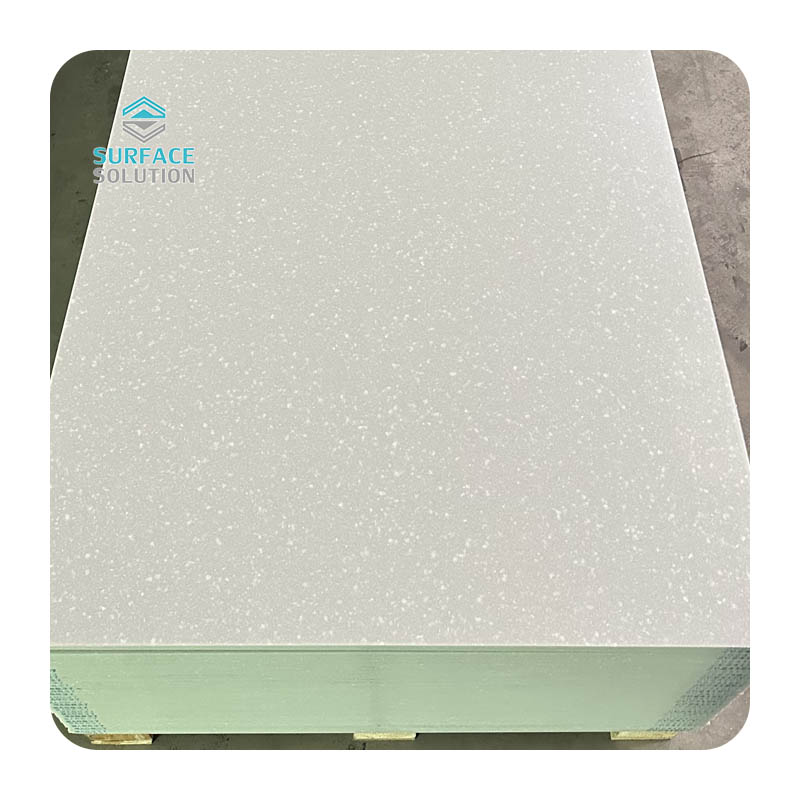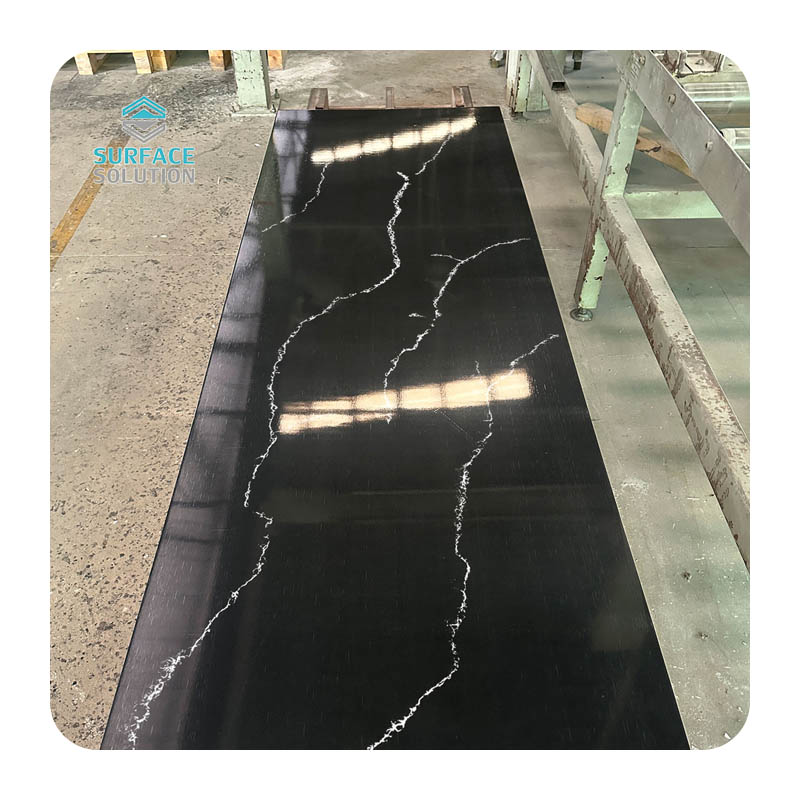The Rise of Acrylic Solid Surface Materials in Contemporary Interior Design
In the ever-evolving landscape of contemporary interior design, materials play a pivotal role in shaping spaces that balance aesthetics, functionality, and sustainability. Among the array of options available to designers and homeowners today, acrylic solid surface materials have emerged as a standout choice, revolutionizing how interiors are conceptualized and executed. From sleek kitchen countertops to seamless bathroom vanities and artistic wall installations, these versatile materials have transcended traditional boundaries, becoming a symbol of modern design excellence. The Core Advantages: Why Acrylic Solid Surfaces Stand Out
At the heart of acrylic solid surface materials’ popularity lies a unique combination of properties that address the key demands of modern living. Unlike natural stones such as marble or granite, which are prone to cracking, staining, and require regular sealing, acrylic solid surfaces are engineered for durability and ease of maintenance. Composed of a blend of acrylic resin, aluminum trihydrate, and pigments, these materials form a non-porous, homogeneous structure that resists moisture, bacteria, and everyday wear. A simple wipe with a mild cleaner is sufficient to keep surfaces looking pristine, making them ideal for high-traffic areas like kitchens a In the ever-evolving landscape of contemporary interior design, materials play a pivotal role in shaping spaces that balance aesthetics, functionality, and sustainability. Among the array of options available to designers and homeowners today, acrylic solid surface materials have emerged as a standout choice, revolutionizing how interiors are conceptualized and executed. From sleek kitchen countertops to seamless bathroom vanities and artistic wall installations, these versatile materials have transcended traditional boundaries, becoming a symbol of modern design excellence. nd bathrooms—spaces where hygiene and longevity are paramount.
Versatility is another defining feature. Acrylic solid surfaces can be molded, thermoformed, and seamlessly joined to create continuous, monolithic designs without visible seams. This flexibility allows designers to explore bold, organic shapes—curved countertops, integrated sinks, and custom wall panels—that would be difficult or impossible to achieve with rigid natural materials. Moreover, the material is available in an extensive palette of colors, textures, and finishes, from matte neutrals that complement minimalist aesthetics to vibrant hues and marble-like veining that mimic natural stone. This adaptability ensures that acrylic solid surfaces can align with any design style, from industrial and Scandinavian to luxury modern.


Applications That Redefine Interior Spaces
The practicality and aesthetic appeal of acrylic solid surfaces have led to their widespread adoption across diverse interior applications. In kitchens, they have become a preferred alternative to quartz and granite. The seamless integration of sinks into countertops eliminates crevices where food particles and bacteria can accumulate, enhancing both hygiene and visual cohesion. For open-concept kitchens that blend with living areas, acrylic surfaces offer a smooth, unbroken transition that elevates the sense of space.
Bathrooms, too, have benefited from the rise of acrylic solid surfaces. Freestanding vanities with curved edges, shower walls with integrated niches, and even custom bathtubs—all made possible by the material’s moldability—create a spa-like atmosphere that prioritizes both beauty and functionality. The non-porous nature of acrylic also prevents the growth of mold and mildew, a common concern in moist bathroom environments, reducing the need for frequent deep cleaning. Beyond kitchens and bathrooms, acrylic solid surfaces are making their mark in commercial and residential spaces alike. In retail stores, they are used for display counters and wall panels that exude a sleek, contemporary vibe. In offices, they serve as durable desk surfaces and reception area countertops that withstand daily use. Even in high-end residential projects, designers are incorporating acrylic solid surfaces into statement pieces—such as custom fireplace surrounds and accent walls—to add a touch of modern elegance without compromising on durability.
Sustainability: A Key Driver in Modern Adoption
As sustainability becomes an increasingly critical consideration in interior design, acrylic solid surface materials have stepped up to meet the demand for eco-friendly options. Many manufacturers now produce acrylic solid surfaces using recycled materials, including post-consumer acrylic resin and aluminum trihydrate, reducing the environmental impact of production. Additionally, the material’s longevity and resistance to wear mean that it does not need to be replaced as frequently as other surfaces, minimizing waste over time.
Furthermore, acrylic solid surfaces are fully recyclable at the end of their lifespan. Unlike some composite materials that are difficult to disassemble or recycle, acrylic can be broken down and repurposed into new products, closing the loop on sustainability. For homeowners and designers who prioritize green living, this combination of durability, recyclability, and reduced maintenance makes acrylic solid surfaces a responsible choice.
The Future of Acrylic Solid Surfaces in Interior Design
As technology advances and design trends evolve, the potential for acrylic solid surfaces continues to expand. Manufacturers are investing in research and development to create even more innovative products, such as surfaces with built-in antimicrobial properties for healthcare settings or heat-resistant variants for outdoor use. The integration of digital design tools also allows for greater customization, enabling designers to create one-of-a-kind patterns and textures that reflect the unique vision of each project.
Moreover, as consumers increasingly seek spaces that are both functional and aesthetically pleasing, acrylic solid surfaces are well-positioned to remain a dominant force in interior design. Their ability to adapt to changing trends—from the rise of biophilic design (with nature-inspired textures) to the popularity of monochromatic color schemes—ensures that they will continue to be a go-to material for years to come.
In conclusion, the rise of acrylic solid surface materials in contemporary interior design is a testament to their ability to meet the diverse needs of modern living. Combining durability, versatility, sustainability, and aesthetic appeal, these materials have redefined what is possible in interior spaces, empowering designers and homeowners to create environments that are both beautiful and functional. As the design industry continues to prioritize innovation and sustainability, acrylic solid surfaces are set to play an even more significant role in shaping the interiors of the future.




 What Is Solid Surface Material? A Complete GuideIn the world of interior design and home renovation, "solid surface material" is a term frequently heard—but what exactly is it? Unlike natural materials mined from the earth or rigid synthetic alternatives, solid surface is a engineered man-made mater
What Is Solid Surface Material? A Complete GuideIn the world of interior design and home renovation, "solid surface material" is a term frequently heard—but what exactly is it? Unlike natural materials mined from the earth or rigid synthetic alternatives, solid surface is a engineered man-made mater What Are Solid Surface Countertops Made Of? A Comprehensive BreakdownSolid surface countertops have become a popular choice in modern kitchens and bathrooms, celebrated for their seamless appearance, durability, and versatility. Unlike natural stone (such as granite or marble) or ceramic tiles, soli
What Are Solid Surface Countertops Made Of? A Comprehensive BreakdownSolid surface countertops have become a popular choice in modern kitchens and bathrooms, celebrated for their seamless appearance, durability, and versatility. Unlike natural stone (such as granite or marble) or ceramic tiles, soli
















